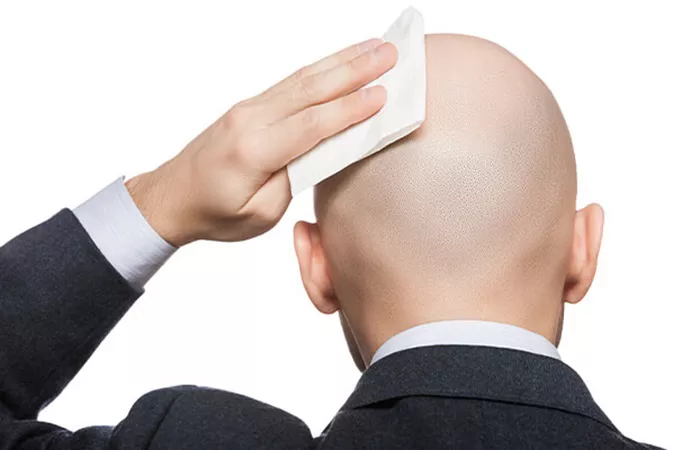Hair transplant surgery is a common and effective method for treating hair loss. The procedure involves relocating hair follicles from one part of the body, typically the back or sides of the scalp, to the thinning or balding areas. Two primary techniques are used: Follicular Unit Transplantation (FUT) and Follicular Unit Extraction (FUE). Both methods aim to provide natural-looking results, but the recovery process and post-operative care are crucial to ensure the success of the transplant.
The Healing Process Post-Transplant
Initial Recovery Phase
The initial recovery phase following a hair transplant is critical. During this period, the transplanted hair follicles are highly sensitive and require meticulous care. The scalp may experience swelling, redness, and scabbing, which are normal parts of the healing process. Patients are typically advised to avoid physical activities that may strain the scalp or cause excessive sweating.
Importance of Post-Operative Care
Post-operative care is essential for the success of a hair transplant. Following the surgeon’s instructions meticulously can significantly impact the final outcome. This includes taking prescribed medications, keeping the scalp clean, and avoiding activities that could dislodge the newly transplanted follicles. One such activity to be cautious about is sweating.
How Sweating Affects the Scalp
Sweat Composition and Its Impact
Sweat is primarily composed of water, salts, and small amounts of waste products. While it is a natural bodily function essential for regulating body temperature, its impact on the scalp, especially post-transplant, can be significant. Sweat can potentially create an environment that encourages bacterial growth, leading to infections.
Risks of Infection
Infections are a significant concern post-transplant. The presence of sweat can exacerbate this risk by keeping the scalp moist, providing a breeding ground for bacteria. Infections can compromise the healing process, potentially leading to folliculitis, where hair follicles become inflamed. This condition can affect the growth of the newly transplanted hair.
Sweating During the Initial Recovery Phase
Avoiding Physical Activity
During the initial recovery phase, typically the first two weeks post-transplant, it is crucial to avoid activities that induce sweating. This includes strenuous exercise, outdoor activities in hot weather, and sauna or steam room use. Excessive sweating can dislodge grafts and hinder the healing process.
Keeping the Scalp Dry
Maintaining a dry scalp is vital during this period. Patients are advised to stay in cool environments and use air conditioning or fans to keep the temperature down. Additionally, wearing loose, breathable clothing can help minimize sweating.
SEE ALSO: Can You Wear a Hard Hat After a Hair Transplant?
Managing Sweat After the Initial Recovery Phase
Gradual Return to Normal Activities
After the initial recovery phase, patients can gradually return to their normal activities, including exercise. However, it is essential to start slowly and monitor the scalp’s response to physical activity. If sweating occurs, it is important to clean the scalp gently afterward to remove any sweat residue.
Hygiene Practices
Maintaining proper hygiene is crucial throughout the recovery process. Patients should wash their scalp with a mild, prescribed shampoo and follow the surgeon’s instructions on how often to wash their hair. This helps prevent sweat buildup and reduces the risk of infection.
Long-Term Considerations for Hair Transplant Success
Regular Scalp Care
Even after the scalp has fully healed, it is important to maintain regular scalp care. This includes using suitable hair care products, avoiding harsh chemicals, and protecting the scalp from excessive sun exposure. Proper scalp care ensures the longevity of the transplanted hair.
Monitoring and Follow-Up
Regular follow-up appointments with the hair transplant surgeon are essential. These appointments allow the surgeon to monitor the progress of the transplanted hair and address any concerns promptly. Patients should report any unusual symptoms, such as persistent redness, swelling, or pain.
Addressing Common Concerns about Sweating and Hair Transplants
Can Sweating Dislodge Hair Grafts?
One common concern among hair transplant patients is whether sweating can dislodge hair grafts. During the initial recovery phase, the grafts are not firmly rooted and can be easily dislodged. Therefore, avoiding activities that cause sweating is crucial. However, once the grafts have fully healed and taken root, normal sweating from activities should not dislodge them.
Can Sweating Affect Hair Growth?
Another concern is whether sweating can affect the growth of transplanted hair. While sweat itself does not directly impact hair growth, the conditions it creates can influence the health of the hair follicles. Excessive sweating can lead to infections or folliculitis, which can, in turn, affect hair growth. Maintaining a clean and dry scalp is key to preventing these issues.
How to Minimize Sweating Post-Transplant?
To minimize sweating post-transplant, patients should:
Stay Cool: Use fans, air conditioning, and stay in cool environments.
Dress Appropriately: Wear loose, breathable clothing to reduce body heat.
Avoid Heat: Refrain from using saunas, steam rooms, and hot tubs.
Hydrate: Drink plenty of water to help regulate body temperature.
Consultation with the Surgeon
Pre-Surgery Discussions
Before undergoing a hair transplant, it is essential to discuss any concerns with the surgeon. This includes questions about sweating and how it might affect the recovery process. The surgeon can provide personalized advice based on the patient’s lifestyle and specific needs.
Post-Surgery Instructions
Following the surgery, the surgeon will provide detailed post-operative instructions. Adhering to these instructions is crucial for the success of the transplant. If any issues arise, such as excessive sweating or signs of infection, patients should contact their surgeon immediately.
Conclusion
Sweating can affect the outcome of a hair transplant, especially during the initial recovery phase. By understanding the potential risks and taking appropriate precautions, patients can ensure a successful recovery and optimal results. Maintaining proper hygiene, avoiding activities that induce sweating, and following the surgeon’s post-operative instructions are key to the success of the hair transplant. Regular follow-up appointments and long-term scalp care further contribute to the longevity of the transplanted hair. By addressing concerns and managing sweat effectively, patients can enjoy the benefits of their hair transplant for years to come.

